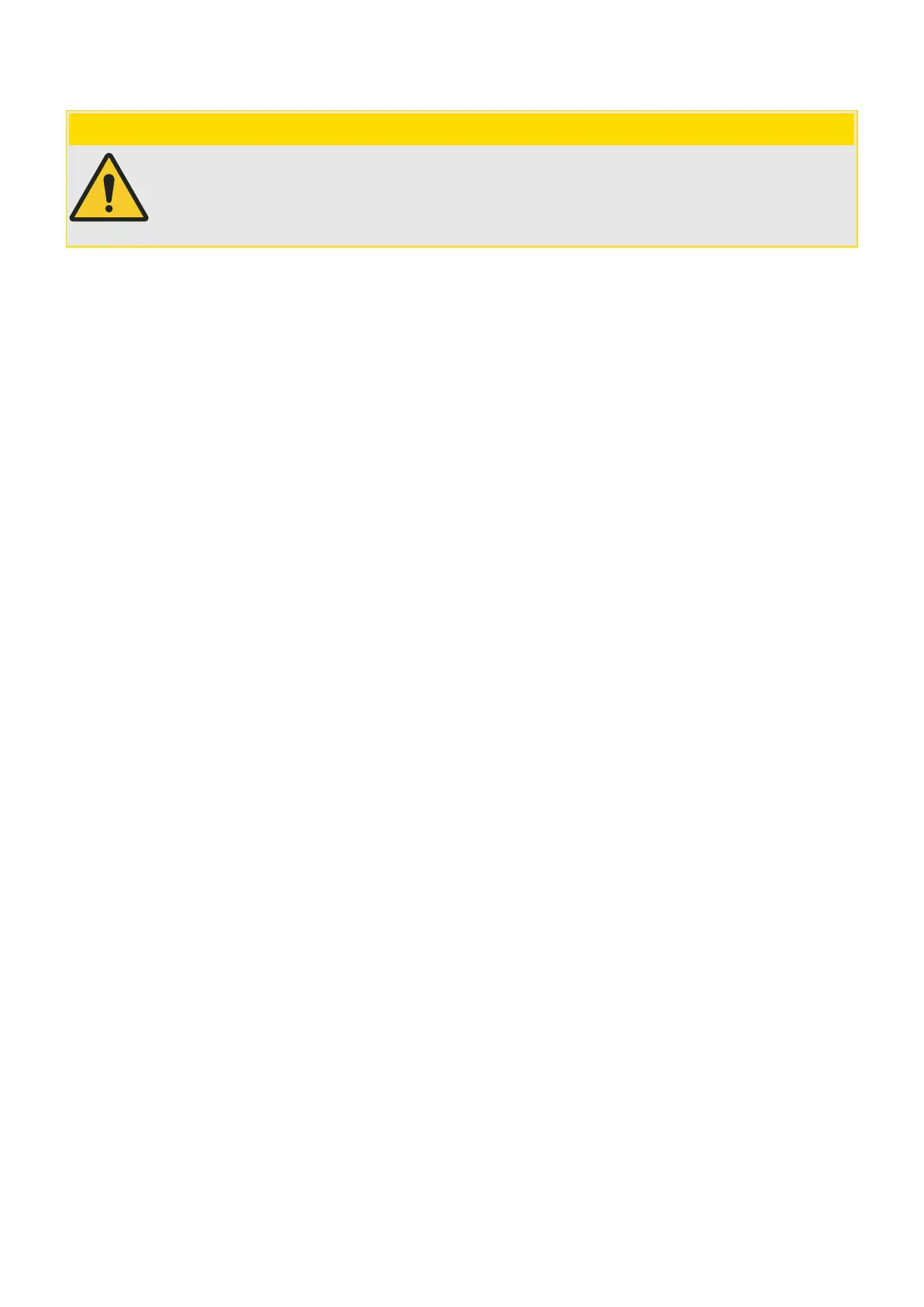CAUTION!
In most countries, there are specic national regulations and standards about functional
and protection tests that must be carried out on a regular basis.
These must be followed carefully in any case.
Accessories for Commissioning Work
For commissioning of the protection system, the following accessories should be available:
• For WIC1‑1 and WIC1‑4: a DiggiMEC interface; recommended: a PC with an installed•
Smart view software
•
Secondary testing system
•
• Screwdriver; cross slot type, size 1; 3 mm slot•
• Setting parameters•
7.1.1
Special Features of the WIC1 Test
For every self-supplied device, it has to be taken into account that the CT has to feed more
power than this is the case for protection devices with an additional aux. voltage source.
Furthermore, it has to be noted that – with reference to the entire measuring range of the
protection devices – the input impedance of the individual phases is not linear.
The WIC1 receives its supply energy out of the measuring circuit. Due to the circuit logic the
WIC1 changes its measuring load periodically (with a period of ~1 kHz).
This can have an eect on the feeding source.
7.1.2
Selection of the Secondary Test System
When selecting the secondary test system, the following particulars should be taken
into account.
•
Secondary test system to be used as current source.
•
• Three phases for the earth current test, one phase for the phase current test (see•
╚═▷ “7.1.5 Functional Test”).
• Sucient output power for the thresholds to be tested (see ╚═▷ “7.1.5.2 Pickup•
Thresholds for the Phase Overcurrent Stage I>”, ╚═▷ “7.1.5.3 Pickup Thresholds for
the Short-Circuit (Phase Overcurrent) Stage I>>”).
• The highest possible test current for testing via the test winding is at 22.4 A. A test•
system with an output current up to 10 A should be sucient.
• A timer for measuring the time 0 … 300 s. The time signal can be measured via the•
WIC1 outputs TC+/TC− or FI+/FI− (WIC1‑4: Out+/Out−) as positive edge of a 24 V
signal.
189WIC1WIC1-1.0-EN-MAN
7 Commissioning
7.1.1 Special Features of the WIC1 Test

